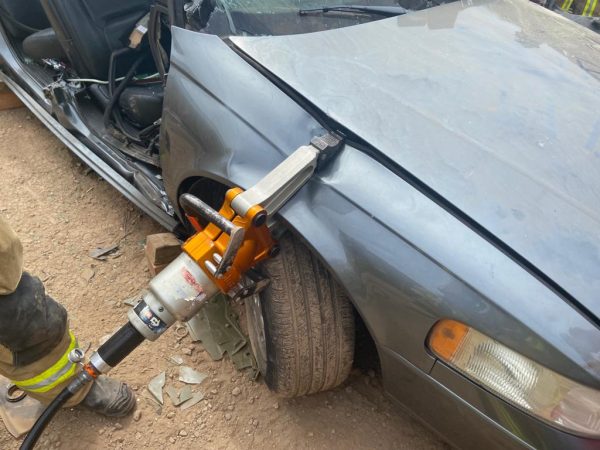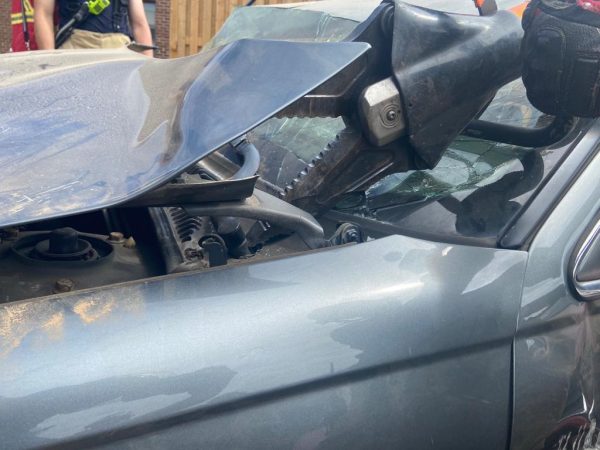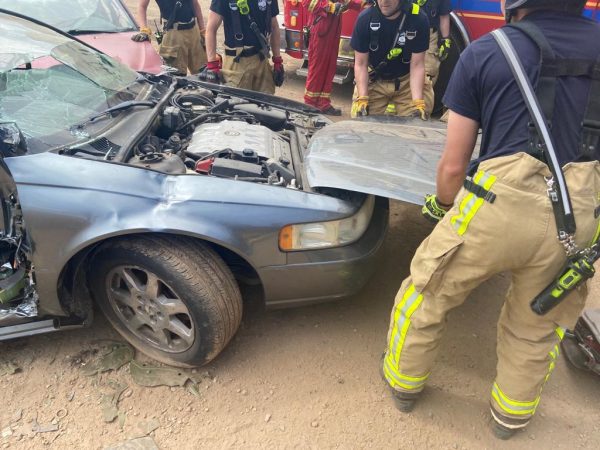
Extrication Tips: Work smarter not harder during hood access
Chad Roberts
Features Uncategorized Training Week firefighter trainingI know we’ve all heard it before — work smarter not harder — and it seems like it can be applied to almost any task or discipline in our industry. And while it may seem simple, we still find ourselves taking the hard road.
In this particular situation I’m going to address hood access on the extrication scene and during car fire operations. For years, I have been to many incidents that require access under the hood and while it may seem like a simple task, I continually see crews struggle with the easiest and safest way to accomplish it.
While not trying to jump to conclusions and criticize those trying to achieve this relatively common task, I generally equate it to any one of the 3 ‘Us’, something I was introduced to by listening to motivational leadership speaker Frank Viscuso. His theory simply speaks to situations when an action isn’t being performed properly and relates it to one’s unwillingness, lack of awareness, or inability.
For the specific topic of hood access and how to perform it safely, I’m going to address the unawareness and hopefully change some of those in the unwillingness category. For as much as it seems simple, like anything in our jobs we are expected to perform it properly, safely and professionally.
How many instances have you or seen other crews struggle with the hood latch, whether it being during an extrication or post car fire knock down. If we require hood access in a simple accident or minor incident, we should locate the hood release latch, release it and then find the mechanism under the hood. The only issue we may run into in these situations will be locating the release switch, as some of these are actually electronically controlled and must be accessed through the touch screen in the vehicle. Besides those typical operations, I’m going to offer a couple quick tips to get hood access in situations where the latch mechanism has either been broken, can’t be located or is burned away.
In these circumstances, we are generally trying to gain entry so we can control the 12-volt battery or in more increasingly common instances, the high voltage cut loops in some EV and hybrid vehicles. To perform this operation safely, let’s remember that we have hydraulic tools on most of our scenes, so work smarter not harder and put them to use.

Making a fender squeeze with your spreaders can be a great access option. All photos courtesy of Chad Roberts.
The first option is to make a fender squeeze with the tool which will ultimately give you a good purchase point under the hood. Once established, insert the spreader tips into the purchase and continue spreading open the hood. From here, you can follow your openings made down towards the latch, which is generally located right in the centre front of the vehicle. Be mindful of the fender squeeze in newer EV and hybrid vehicles as attacking this location blindly can lead to contact with some high voltage components. That being said, let’s look at an alternative move.

Inserting your spreaders or combi tool as pictured can be a great alternative to the fender squeeze and expose hood hinges.
The second option is very similar but addresses a different way to get a good purchase point. Rest your spreader or combination tool on the front windshield with the tips inserted under the hood. By spreading from this location, you will create a purchase point much like the previous option. From there, you can cut the hood hinges and swing the hood 180 degrees until it releases from the mechanism. Or continue to follow the gaps created down to the latch mechanism and either spread it until failure or cut it away with your combination tool or cutter.

Once the hinges are cut, defeating the latch can be avoided by simply spinning the hood 180 degrees.
Let’s not revert to the option of two to three firefighters all pushing and prying with all their strength on a pry bar in hopes that we will simply out muscle these mechanisms. Not only is this a great way for one of us to be injured but frankly it looks unprofessional. Use the tools that are available to us and get some hydraulic tool time in that we simply don’t get enough of anymore.
There may be a time when hydraulic tools are just not available to us. In those events, we need to remember what else we have available. With the use of a halligan or other prying tool to gain access to our hood hinge points, we can sometimes cut these with a large set of bolt cutters or reciprocating saw. Once both hinges are cut, simply rotate the hood 180 degrees, and the hood will fall out of that front mechanism that we battle so many times (similar to hydraulic option 2).
While this all seems like a lot of talk for something taken so lightly in our profession, we must remember hood access can be extremely important. On an extrication scene, we must be able to access and disable 12 volt and high voltage systems.
We have to remember our timing with when we do this. Disabling the high voltage is important right away, but let’s keep in mind that the 12-volt battery may be required for moving seats, steering wheels, pedals and putting windows down. Cutting this power to quickly can take away a great space creating option for us.
When it comes to the scene of a car fire, engine compartment fires will require good, safe access. Once the fire is knocked down, the primary opening made to extinguish the under the hood fire is generally established by a halligan or similar tool. Instead of exposing our brothers and sisters to undue work and danger, let’s use that original opening made by our halligan and call on our hydraulic tools to do the job safely and competently. Once the hood opening is created the remaining fire can be knocked down.
Hood access like many other “simple” jobs in our profession must not be forgotten. Everything we do must be done with competence, professionalism, and keep the safety of our members at the fore front. By utilizing “all” the tools we have at our disposal, we can do this with relative ease.
Chad Roberts is a firefighter in Oakville, Ont. He is a member of the Oakville extrication team and competes and trains across North America. Contact Chad at chadroberts12@gmail.com.
Print this page
Advertisement
- Lightning storm sparks new fires on Vancouver Island
- Proposed bylaw would address radio communication in high-rise buildings